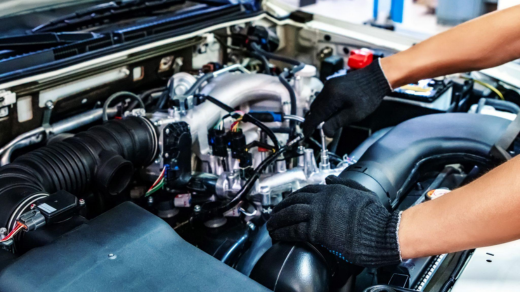Understanding JDM Culture and Its Impact on American Car Enthusiasts

The Japanese Domestic Market (JDM) has revolutionized the automotive landscape far beyond Japan’s borders, creating a passionate community of enthusiasts worldwide. This unique automotive culture represents more than just vehicles; it embodies a philosophy of precision engineering, innovative design, and performance optimization that has captivated American car lovers for decades.
The Origins of JDM Excellence
JDM culture emerged from Japan’s post-war economic boom, when manufacturers like Toyota, Honda, Nissan, and Subaru began developing vehicles specifically for their domestic market. These cars often featured advanced technologies, higher-quality components, and performance specifications that differed significantly from their export counterparts. The rigorous Japanese inspection system, known as Shaken, encouraged manufacturers to build vehicles with exceptional reliability and longevity.
Japanese automakers invested heavily in research and development, creating engines and transmissions that pushed the boundaries of performance while maintaining remarkable fuel efficiency. This dedication to excellence resulted in legendary powerplants like the Toyota 2JZ-GTE, Honda B-series VTEC engines, and Nissan’s SR20DET, which became the foundation of countless automotive dreams.
Performance Engineering Philosophy
The JDM approach to automotive engineering differs fundamentally from other markets. Japanese manufacturers prioritized compact, lightweight designs that maximized power-to-weight ratios. They developed sophisticated technologies like variable valve timing (VTEC), turbocharging systems, and advanced all-wheel-drive configurations that were often years ahead of their international competitors.
This engineering philosophy extended to transmission design as well. Japanese manufacturers created gearboxes that could handle significant power increases while maintaining smooth operation and durability. The close-ratio gear sets and precise synchronizers found in JDM transmissions became highly sought after by performance enthusiasts seeking to extract maximum potential from their builds.
The American Fascination
American car enthusiasts discovered JDM vehicles through various channels, including military personnel stationed in Japan, import specialists, and the growing drift and tuning scenes. The combination of affordable performance potential and unique styling created an immediate attraction. Unlike domestic muscle cars that relied primarily on displacement for power, JDM vehicles demonstrated that sophisticated engineering could achieve impressive results from smaller, more efficient packages.
The tuning potential of JDM engines particularly appealed to American enthusiasts. These powerplants often featured robust internal components and advanced designs that could support significant modifications. A stock Honda B16A or Toyota 4A-GE could be transformed into a high-revving masterpiece with relatively simple modifications, while more serious builds could extract hundreds of additional horsepower.
Import Regulations and Market Evolution
The 25-year import rule significantly shaped the American JDM market. This regulation, which allows the importation of foreign-market vehicles after 25 years, created waves of excitement as iconic models became legally available. Enthusiasts eagerly awaited the arrival of legendary vehicles like the Nissan Skyline GT-R, Honda NSX, and Toyota Supra.
However, the demand for JDM components existed long before complete vehicle imports became feasible. Enterprising importers began bringing engines, transmissions, and other components to the United States, allowing enthusiasts to experience authentic JDM performance in their existing vehicles. This market segment grew rapidly as tuners discovered the superior quality and performance potential of genuine Japanese components.
Modern JDM Market Dynamics
Today’s JDM market in America has evolved into a sophisticated ecosystem of importers, specialists, and enthusiasts. Texas JDM Motors represents the type of specialized business that has emerged to serve this passionate community, providing access to authentic Japanese automotive components.
The modern market encompasses everything from complete engine swaps to individual performance parts. Enthusiasts can now access components that were once impossible to obtain, including rare transmission variants, limited-production engines, and specialized performance parts that never made it to the American market.
Cultural Impact and Community
JDM culture has profoundly influenced American automotive enthusiasm, introducing concepts like “form follows function” and the importance of balance in vehicle dynamics. The emphasis on precision, attention to detail, and continuous improvement has elevated the standard for automotive modifications across all segments.
Car shows, drift events, and time attack competitions now regularly feature JDM-powered vehicles competing at the highest levels. The knowledge sharing within the community has accelerated the development of tuning techniques and performance modifications, creating an environment where innovation thrives.
Future Perspectives
As electrification transforms the automotive landscape, JDM culture continues to evolve while maintaining its core values. The precision engineering and attention to detail that characterized traditional JDM vehicles now influences the development of hybrid and electric performance cars. Japanese manufacturers continue to push boundaries, developing new technologies that will likely captivate future generations of enthusiasts.
The enduring appeal of JDM culture lies in its celebration of automotive excellence and the pursuit of performance through engineering innovation. This philosophy resonates with American enthusiasts who appreciate the combination of reliability, performance potential, and unique character that defines authentic Japanese automotive culture.
